

When the gameplay for the original Assassin’s Creed was demoed live on stage at E3 2006 I was in awe. I watched the short video five or six times in a row. This was an impressive feat; I had truly awful Internet back then. YouTube had been around for a little over a year. For the first time it was easy to see all the footage coming out of the biggest conference in gaming.
I watched the video again for this article. I hadn’t seen it in eight years. Amazingly, it holds up well. The game’s producer, Jade Raymond, narrates as someone off stage controls Altaïr. Back then, the gameplay was stunning. NPCs weren’t cardboard cutouts; they were a living, breathing part of the world. They could help or hinder you depending on what you did. Even more impressive was the free running. Buildings weren’t an obstacle. Levels weren’t corridors. When Altaïr climbed up the side of a building my heart beat faster. This was a game I had to play.
The True History of Assassin’s Creed
Even with the first demos the developers were dropping hints that there was more to Assassin’s Creed than met the eye. The futuristic HUD, random screen artifacts and Raymond’s coy “I can’t talk about what’s on the screen now behind me” when an early animus screen closed out the video all teased at what the game held in store.
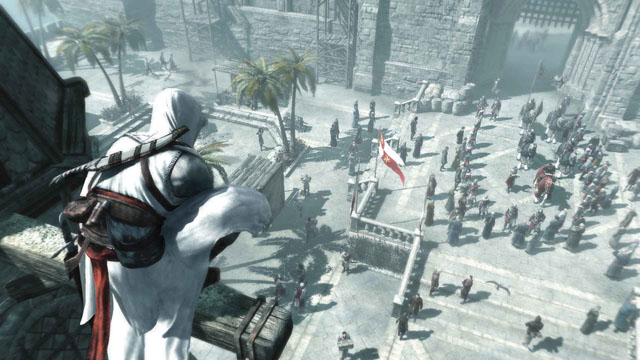
Assassin’s Creed was an accident. Coming off the back of the commercially successful and critically acclaimed Prince Of Persia: The Sands Of Time, Patrice Désilets was tasked with creating a sequel for the next generation consoles: the PS3 and the Xbox 360. Instead of going the easy route and creating a bigger and better Sands Of Time Désilets approached the job from an interesting angle.
Known internally as The Prince Of Persia: Assassin, the game was inspired by the 11th century Assassins Hashshashin. They were a secret order of Shiite Muslims led by the missionary Hassan-i Sabbah. In the unrest of the Crusades they fought Christians and other Muslims for power. The order was famed for the devotion of its adherents. Young members were given both combat and religious instruction. They were led to believe that they were religious warriors. In the 200 years that followed they were used to kill the order’s political and religious rivals. While not their only military tactic, the public killing of their enemies was what the Assassins became known for.
In The Prince Of Persia: Assassin the Prince wouldn’t have returned as a player character. Instead the player would control an Assassin who had to protect an immature prince. The game would have been set in the Middle East during the 12th century. As it developed, it became less and less like a Prince Of Persia game until eventually Ubisoft realized it needed to be a new IP. It became Assassin’s Creed.
The game had been in development for three years by the time Raymond stood on stage at E3. Ubisoft had build an entirely new engine so that they could leverage the power of the PS3 and Xbox 360. Freed from the constraints of being a next-gen sequel to one of the most successful PS2 games ever the developers went to town. They created a huge open world with three detailed cities: Jerusalem, Acre and Damascus, the surrounding area and the Assassin’s fortress in Masyaf for players to explore. Where possible, historic documents were used to make the cities and buildings as authentic as possible. Inspired by the supposed motto of the Hassan-i Sabbah — “Nothing is true, everything is permitted.” — the cities were huge playgrounds: players were free to climb almost every building, kill almost every NPC and generally do as they wanted.
As the release date approached, Ubisoft revealed more details about the game. Desmond Miles — rather than Altaïr Ibn-La’Ahad — was the main character. It wasn’t set in 12th Century Israel but 21st Century America. The screen artifacts and closing shots of the E3 gameplay footage were starting to make sense. More than a year had passed since the E3 announcement and people, including me, were getting eager. Ubisoft, aware they had a potential hit on their hands, ramped up the hype machine.
I live in Ireland. Game releases are a special kind of torture for me. Games normally launch early in the week in the US but not until Thursday or Friday over here. Assassin’s Creed was no exception. For the three days between the US and Irish releases I was caught in limbo. I was torn between devouring every scrap of gameplay footage and religiously avoiding spoilers. I read every review I could get my hands on while avoiding forums (they were still at thing in 2007) where I might have the game ruined for me.
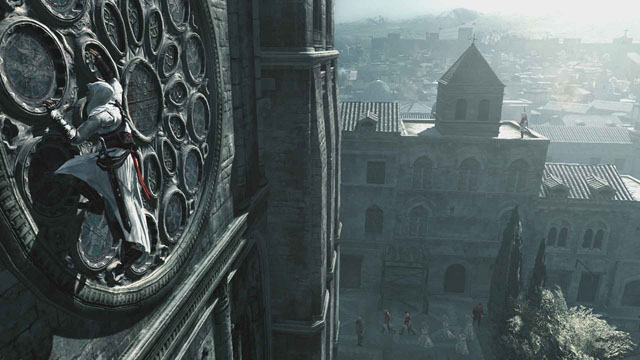
Friday rolled around and I was ready. I was outside my local game store when it opened to pick up my preordered copy. Unlike many American gamers I knew what to expect. Assassin’s Creed launched to critical… something. For a game that was getting 8/10, 4.5 stars and even the occasional perfect score, critics weren’t enamored. The free running, assassination missions, story and graphics were all universally praised, while at the same time huge parts were described as boring and repetitive. For every person who loved the modern day frame story — and the crazy ending — there was someone else who hated it. Like many of the games that would follow, Assassin’s Creed walked a thin line between promise and problems.
I got home and finished the game over the weekend. I certainly wasn’t disappointed, nor did I feel that the game had fully realized its potential. So much was so close. Few gaming experiences have ever made me feel the wonder I felt when I first climbed a wall, ran along the roof tops or performed a perfect air assassination, but similarly, few have made me as frustrated as playing a stealth game for 20-odd hours only to find that the final mission is wave after wave of combat or being hunted by half the guards in Jerusalem for running too quickly.
Despite the odd critical reception, Assassin’s Creed went on to sell more than eight million copies. More than enough to warrant a sequel. The same team was moved on to Assassin’s Creed II; their job was to fix the original’s problems. As was made abundantly clear by the first game’s ending, Assassin’s Creed was not Altaïr’s story, but rather it was Desmond’s. The developers, with the animus frame, had the freedom to do something different. Rather than return to the Crusades, Renaissance Italy was chosen for the sequel. Silent, stoic Altaïr was replaced with the far more charismatic Ezio Auditore da Firenze who was destined to become a fan favourite.
The developers solved many of the original’s flaws. A far more engaging and directed story was written. Rather than being presented with the same stock, research gathering, side missions before every assassination, the player was driven through the game by an exciting revenge narrative with close to 100 side quests. The two main cities — Venice and Florence — were filled with things for the player to do and each had its own unique look and feel. The villa at Monteriggioni gave players a home base to make their own. Again the developers used historical documents to recreate 15th Century Italy in as much detail as possible.
Combat was tightened up with Ezio able to take — and dish out — far more of a beating than Altaïr. Many of the things that have come to define the Assassin’s Creed series were introduced: the economy, upgradable home base, and wanted system among them. Recognisable figures like Leonardo da Vinci and Niccolo Machiavelli were major NPCs. The lessons learned from the first game’s release were thoroughly heeded.
Once again I had to deal with three days of hell. The original’s failure to live up to its promise hadn’t diminished my enthusiasm for a sequel. When Assassin’s Creed II launched in the US in November, 2009 I was glued to my computer for three days. YouTube was far bigger now and gameplay footage was easy to find. The reviews were astounding. Critics loved it. The first game’s good points had been improved on and the problems fixed. Assassin’s Creed II wasn’t just a good game, it was an amazing one. It was instantly in the running for many publications Game of the Year awards and jumped to the top of many console “best of” lists.
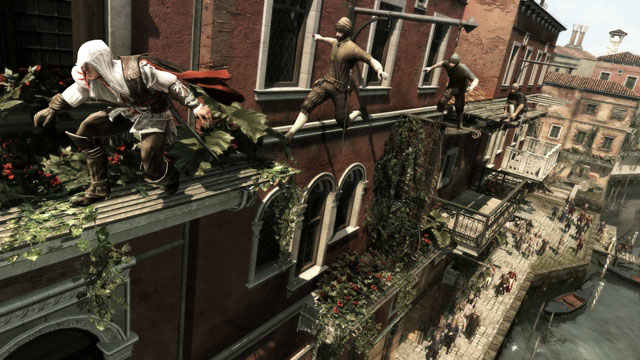
When release day came, I was outside the same store ready to collect my preordered copy. The whole weekend was going to be given over to assassinating Renaissance Italians. The critical acclaim the game had achieved had my expectations through the roof. Assassin’s Creed II exceeded them. Venice was the perfect city. The canals and narrow streets made for exciting rooftop routes. I got chills down my spine the first time I climbed to the top of a tower and looked out at the city below. There was so much to do!
I poured hours into Assassin’s Creed II. I found every secret location, played every side mission and climbed everything bigger than a tree. It showed what games could be. II was far more fun than the original, and not only that, the developers were clearly taking everything less seriously. Within the first hour of gameplay you meet Ezio’s uncle Mario. His greeting? “It’s-a-me, Mario!” British comedian and author Danny Wallace was cast as historian Shaun Hastings who’s wry observations and sarcastic historical database entries further lightened the tone. Ezio himself was far more engaging than Altaïr. Where Altaïr was stoic and reserved, Ezio was emotional and charismatic. There’s a reason Ezio got three main games and a movie.
The frame story was once again bonkers. Desmond had escaped from Abstergo with the help of a group of modern day Assassins. The underlying mythology really began to solidify. I doubt anyone truly grasped what was happening on their first play through but with the help of online discussions it was possible to understand what was happening. The Pieces of Eden were credible McGuffins and the threat of a civilisation ending solar flare was a semi-plausible motivation for the whole series. The appearance of Minerva at the end was one hell of a cliff-hanger.
Ubisoft was obviously delighted with the success. In Ezio they’d found a character that could propel the series. After two blockbuster games Jade Raymond had done more than enough to earn a promotion to Managing Director of Ubisoft Toronto. Her time as the public face of the series had come to an end. Patrice Désilets stuck around a little longer. He fulfilled his creative duties for the un-announced Assassin’s Creed: Brotherhood, but before the its release he took a break from the gaming industry. Work on Brotherhood continued under Patrick Plourde, one of II’s Lead Game Designers.
Brotherhood built and expanded on II’s strong points. Instead of two cities and the surrounding — and largely empty — countryside there was just the one: a huge reimagining of Rome that had to be reclaimed from the Templars district by district. Even more side missions were added. New Assassin’s could be recruited to build the titular Brotherhood. These recruits could be sent off on missions on their own or help Ezio in a fight. New weapons , such as the crossbow, were added. Combat was tweaked again; no longer was sitting back and countering the only strategy. Players were rewarded for attacking first and could chain kills quickly eliminating whole groups of enemies.
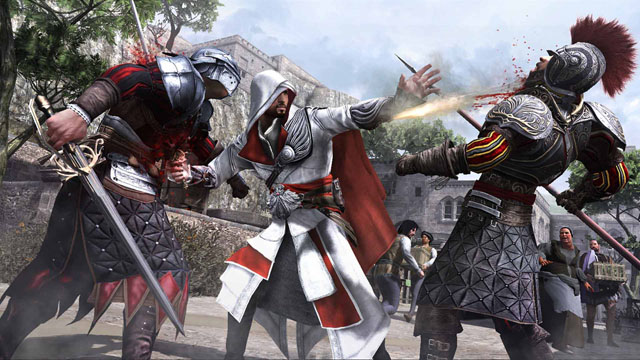
Desmond also became a more active character. His story was set in modern day Monteriggioni — Ezio’s villa from Assassin’s Creed II — and you could leave the animus and explore it at any time.
For the first time, multiplayer was introduced. Rather than go the easy route and settle for standard player vs player combat, Ubisoft worked hard to include the core game mechanics. Stealth was paramount. In an interesting twist, the best way to stay hidden was to act like one of the NPCs that populated the maps.
While the first game took four years in development and the second took two, Brotherhood followed a year behind its predecessor kicking off the now familiar annual cycle. November rolled around and things were as before.
US release. Three days of hell. Irish release.
I settled in to play just as a cold snap hit bringing snow, making it impossible to leave the house. It was perfect.
The critics loved Brotherhood. The reviews were just as glowing as they had been for its predecessor and the Game Of The Year awards soon followed. Sticking with what had worked, making minor tweaks and adding more side activities to a bigger city paid off for Ubisoft. The new follower building mechanic was praised as was the innovative multiplayer. I loved it too.
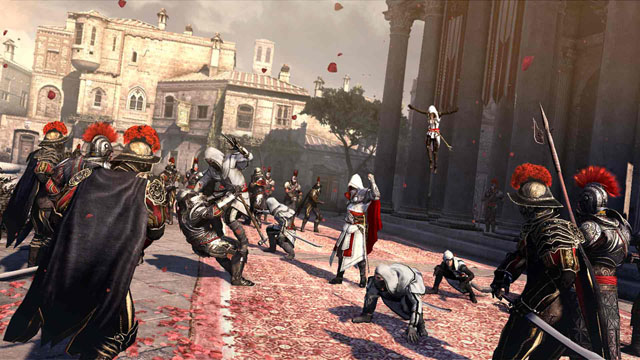
As you can probably gather from this article, I’m a long time fan of the series. For me, Brotherhood was the best game. It was the one that stayed most true to the core mechanics that I loved and innovated enough to be new and exciting. The best missions of any Assassin’s Creed game were Leonardo da Vinci’s quests in Brotherhood. Da Vinci was being used by the Templars to create war machines. He wanted Ezio to destroy them. They were multi-part missions that included stealth, combat and always ended with Ezio using da Vinci’s ridiculous contraptions against the enemy before destroying them. They encompassed all that is best about the Assassin’s Creed series.
Desmond’s story continued developing with more revealed about the Precursors and their connection with the Pieces of Eden. As Desmond searched for the Piece of Eden hidden by Ezio, the connection between the two stories became apparent. The game ends with one of the Precursors, Juno this time, taking control of Desmond’s body and forcing him to kill one of his companions. He then falls into a coma.
Assassin’s Creed: Revelations followed a year later with Far Cry 2’s Art Director, Alexandre Amancio, at the helm. Plourde went on to be the Creative Director for Far Cry 3. Ezio returned as the lead, except he was now past 50. Instead of Rome, the game was set in Constantinople. The hookblade was introduced; it could be used to slide along zip-lines and speed up navigation. A surprisingly deep bomb crafting system was also added. Players could craft more than 100 unique bombs that did everything from direct damage to scattering money to gather crowds. Little else changed.
Altaïr returned as a playable character. Throughout the game the player would find keys that would trigger his memories. Picking up where the first game left off, the missions concluded Altaïr’s tale.
The change to Desmond’s gameplay was the most dramatic. Still in a coma after the events of Brotherhood, he’d been put back in the Animus to recover. Through a series of first person platforming sequences Desmond slowly rebuilds his mind and recovers.
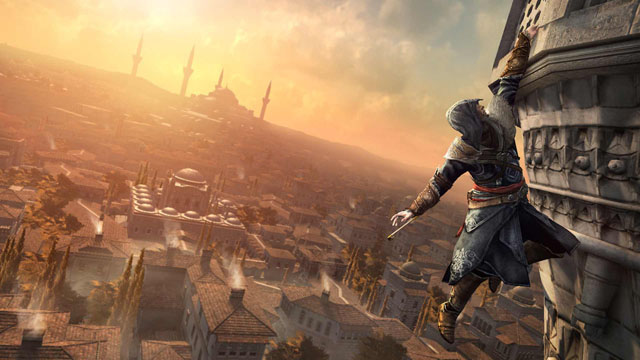
While Revelations was a commercial hit, critics weren’t as excited. The game received solid scores averaging 80 on Metacritic, but the reviews weren’t glowing. The game was criticised for being iterative and showing its age. Since Assassin’s Creed II very little had changed. Revelations was also a victim of its predecessors success. The acclaim received by the previous games was just impossible for Revelations to match.
The conclusions to Ezio’s and Altaïr’s stories were widely praised, but the lack of development in the frame story was criticised. Not since the original Assassin’s Creed had a game in the main series been met with such a mixed response.
A creature of habit, I bought the game in the same store as before. Revelations felt like it was done because it could be, not because there was a need for it. Ubisoft had a year before Assassin’s Creed III was ready, all the assets they needed and the commercial demand. The conclusion to Ezio’s story — especially in the accompanying movie, Assassin’s Creed: Embers — was emotional and satisfying. Returning to the much maligned Altaïr and tidying up his loose ends was also welcome.
However, Assassin’s Creed was never their story, it was Desmond’s and he was stuck in a holding pattern. Revisiting it for this article, I think people may have been unnecessarily harsh at the time. While it didn’t do anything particularly innovative, it was the most polished of Ezio’s games. In isolation, it’s an exceptional game.
Even before Brotherhood and Revelations were released, work had started on Assassin’s Creed III. Director duties fell to Alex Hutchinson, an Australian who’s previous work included Spore and Army of Two: The 40th Day. It was to be the most ambitious game to date. An entirely new main character, a new setting and big changes to the core gameplay. Gone were tight city streets, tall buildings and large crowds. Now there were sprawling forests, ship battles and changing weather. The game’s engine was updated giving the developers more power to play with. Ubisoft were taking a huge leap of faith and not sure whether or not there was a haystack at the bottom.
III was set in Colonial America during the American Revolution. To gain perspective on the struggle between the American and British forces, Ubisoft went with an outsider for the main character: the half-British half-Mohawk Ratonhnhaké:ton — also known as Connor. Unlike Altaïr and Ezio, Connor’s membership of the Assassin’s — and his part in the American Revolution — is incidental to his true goals: saving his village. He is also a far darker and more intense character than his predecessors. Where Altaïr was stoic and Ezio was charismatic, Connor is brooding and emotional.
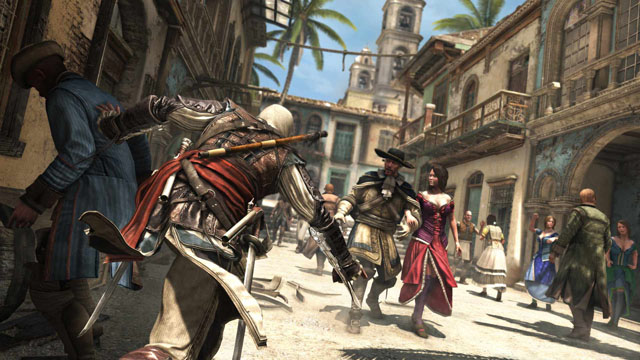
Even more dramatic was the change in setting. Assassin’s Creed was a series known for its huge cities. Replacing them with significantly smaller towns and a sprawling forest was brave. III even added weather; covering the game world in three feet of snow not only changed how it looked but changed how the players could interact with it. You could also take to the sea. The new naval combat was the most radical departure from earlier games. Connor was still an Assassin. Trees were still climbed with the same free running mechanics. But ships were totally new.
There were more minor gameplay changes too. The counter attack style combat was almost totally scrapped; players were rewarded for being far more aggressive. The new animations were more visceral and violent than any that came before. Instead of subtle slices with a hidden blade, Connor favoured crushing blows with a tomahawk.
New game mechanics were introduced. The home base side missions of earlier games were given a larger role. Rather than interacting with randomly generated character models, there was now a story, unique NPCs and a trading economy to go along. Connor could hunt animals in the woods and sell their meat and hides.

Assassin’s Creed III had the biggest launch of any game in the series selling more than 12 million copies in the months following its release. Reviews were positive but not gushing: the changes in character, setting and gameplay were all welcomed, but poor mission design and the accompanying tedium were criticized. III had done enough to be nominated for a rake of awards but not enough to win many. To most, it was a clear improvement over Revelations, but not on par with II or even Brotherhood.
Assassin’s Creed III was released on Halloween in Ireland. I somehow managed to resist the temptation to dress as an Assassin. The store where I’d bought all the previous games had closed — it had mainly rented out DVDs and the Internet had finally killed it — so I had to head farther afield. III is actually my least favourite game of the series. I had always loved the city gameplay and the trip to the backcountry just didn’t grab me as much. Boston and New York were poor substitutes for Rome and Constantinople. Even the rightly praised naval combat couldn’t replace the pleasure of a good rooftop chase.
What Assassin’s III nailed was the conclusion to Desmond’s story. The frame had never been the easiest narrative to follow, but the final scenes pulled everything together. Desmond’s sacrifice to save civilisation never felt trite or contrived; the series had been building to this point and he had transformed, through the guidance of Altaïr, Ezio and Connor, from a selfish bartender to a fitting hero for humanity. Before the release of III I had wondered what would happen to the series after Desmond’s arc had concluded. The release of Juno into the world showed that Ubisoft still had plans.
Assassin’s Creed III marked a turning point for the series. The first game, despite its claims of historical realism, featured an Islamic main character without ever mention Islam — all things considered, quite a remarkable achievement. Ezio’s trilogy didn’t really address the dramatic changes happening during the Renaissance. In III the developers began to engage more with history and culture.
Nicolas Trépanier, an Assistant Professor of History, teaches a course on representations of history in video games for the Honors College of the University of Mississippi. He was kind enough to give me an hour of his time to discuss the Assassin’s Creed series. He explained that “at the most basic level [with historical games] you have a communication between the game designers who are not historians and most of the players who are not historians. Up to now … the big problem was that the communication was a little bit too fluid … what one expected was being met by what the other was providing”. This is as true of the Total War games as it is of Assassin’s Creed.
Assassin’s Creed III’s nuanced depiction of Native Americans, and their culture, changed this. Early on in the development Ubisoft brought in Teiowí:sonte Thomas Deer, a cultural liaison officer with the Kahnawake Language and Cultural Centre. Originally the game included scalping, Deer was able to explain that the Mohawk Nation Connor was from didn’t scalp, so rather than pander to player expectations, the feature was removed. Similarly, the term ‘Nation’ rather than ‘tribe’ was used in the game — Deer argued that the former better reflected the society of the native population. The latter had unfortunate primitive connotations.
The first few hours of III take place in Connor’s home village. Every conversation occurs in the Mohawk language with subtitles for the player. To recreate the feel of the village, the game featured traditional songs sung by the Kahnawake Men’s Singing Society. Ubisoft even went so far as to record the sound of Mohawk children playing.
This cultural respect paid off for Ubisoft. The mainstream gaming press recognized the authenticity and welcomed a main character that wasn’t just another pair of white hands holding a gun. More importantly, the Montreal Gazette reports that the reception “among First Nations, especially in Kahnawake, was overwhelmingly positive”.
Culturally and commercially Assassin’s Creed III was a huge success but the gameplay had still received some criticism. While III was in development, a second team in Ubisoft had been working on a sequel under the direction of Assassin’s Creed Brand Content Manager Jean Guesdon with the assistance of the relatively unknown Ashraf Ismail. Guesdon’s job since Brotherhood had been to ensure each game fit the core arc of the series. Now he was in charge of a major release.
Assassin’s Creed IV: Black Flag was another radical departure for the series. For the second time in two years there was a new character and setting. Edward Kenway — grandfather of III’s Connor — took the lead in the Caribbean based game. Just as II took what was great about Assassin’s Creed and improved on it, Black Flag did the same with III. The naval missions had proved to be a spectacular success, so they were improved on and became one of the core mechanics. The inclusion of more traditional cover based stealth had proven popular so it took a greater role in Black Flag. For the first time it was really possible to sneak as an Assassin.
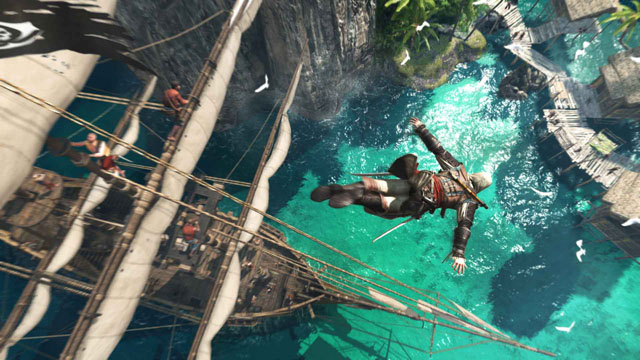
With the conclusion of Desmond’s arc in III, the frame story needed to be restructured. Now the player was a hired employee in Abstergo exploring Desmond’s genetic memories through DNA taken after he died. The story deals with Juno’s attempt to fully return after her escape at the end of III.
Black Flag was met with a level of critical acclaim the series hadn’t seen since II. The dramatic change in setting and the resulting change in gameplay were highly praised. Critics loved the huge open world, especially how beautiful it was, and that it could be seamlessly explored with no load screens. The story was also deemed a success. It was more light-hearted and fun than any of the previous games. Kenway proved to be a far more entertaining lead than Connor. Game Of The Year awards followed.
As usual I devoted launch weekend to the new Assassin’s Creed game. While I felt the focus was more on the piracy than assassinating, I still thoroughly enjoyed Black Flag. The naval combat was deeply satisfying, the stealth exhilarating and the story engaging. Even the frame story worked despite the death of the series’ main character in the previous game. I still missed the tall towers and vast cityscapes but the beautiful island setting did much to make up for it. Even the cities were an improvement over III’s.

The true star of Black Flag really was the setting. Ubisoft succeeded in created a stunning Caribbean game world and filled it with things for the player to do. Once again, they’d gone out of their way to create an authentic world. Assistant Professor Trépanier explained that they’d found “things in the work of historians … that most people don’t know about”. Ubisoft went and “surprise[ed] the audience with things that are historically accurate but previously unknown to them” by including things like the egalitarian nature of piracy, hunting and whaling. The slave-turned-quartermaster Adéwalé, and the female pirates Anne Bonny and Mary Read all had significant roles in the story. Trépanier was impressed, “instead of reinforcing misperceptions it might be correcting them”.
Assassin’s Creed: Unity was just released. It was built from the ground up for the PS4 and Xbox One. For the first time ever, I didn’t play an Assassin’s Creed game on the day it launched. I still haven’t played it. I don’t have a PS4, although I plan to get one very soon (Dave has convinced me) — and Unity will be the first game I buy.
Revelation’s Director Alexandre Amancio returned at the helm. Unity features Arno Dorian, a French Assassin seeking to avenge the murder of his adoptive father. The game is set in Paris during the French Revolution. As I’m avoiding spoilers, I don’t have any more plot information than that.
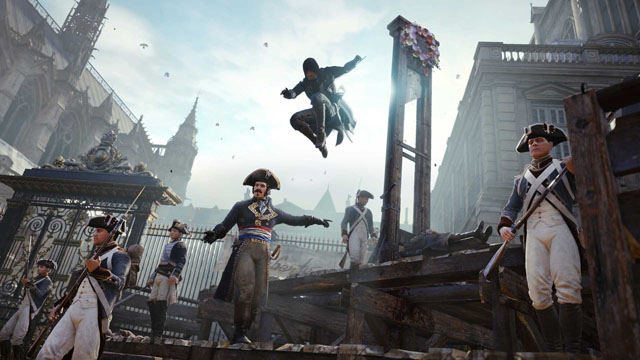
The critical reception for Unity has been rough. It appears to be two steps forward and one step back. Although critics have praised the beauty of the game, its ambition and the new sandbox assassination missions, the story and reversal of many of III’s and Black Flag’s innovations have been criticized. Many of the series long running issues have not been fixed. Players are also reporting technical glitches. The consensus is that, despite the long development time, Unity feels half done.
What strikes me most is the similarities between Unity, the original Assassin’s Creed and Assassin’s Creed III. All are breathtaking games that have tried something new. All are deeply flawed. All suffered a mixed critical reception. Two have been followed by an astonishing sequel that took what they’d done, improved on it and blew everyone away. I eagerly await next October. Though who knows where it could be set.
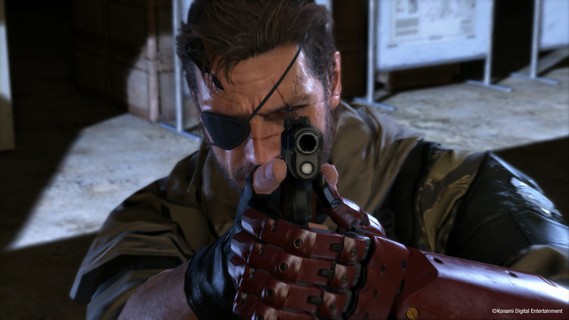

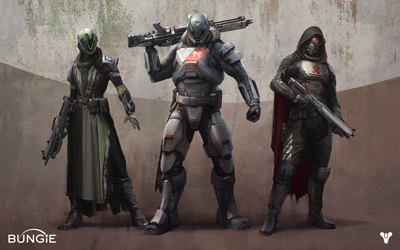
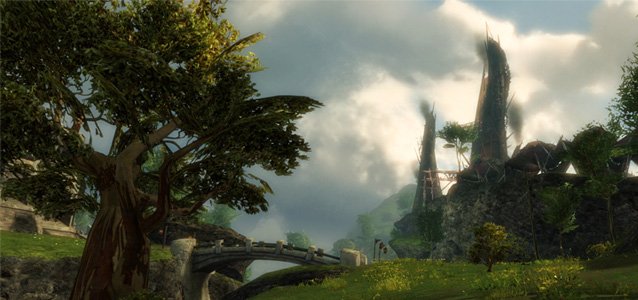
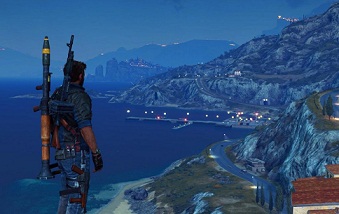 Just Cause 3 Rebels Shrine locations - Fonte, Dracon, Striate
Just Cause 3 Rebels Shrine locations - Fonte, Dracon, Striate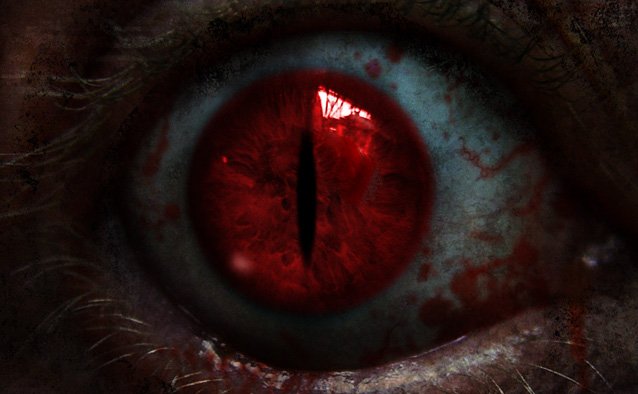 Hordes of Flesh-Eating Narratologists
Hordes of Flesh-Eating Narratologists Destiny Guide: How to Beat the Will of Crota Strike
Destiny Guide: How to Beat the Will of Crota Strike 9 Magical Harry Potter Gadgets You Could Actually Own
9 Magical Harry Potter Gadgets You Could Actually Own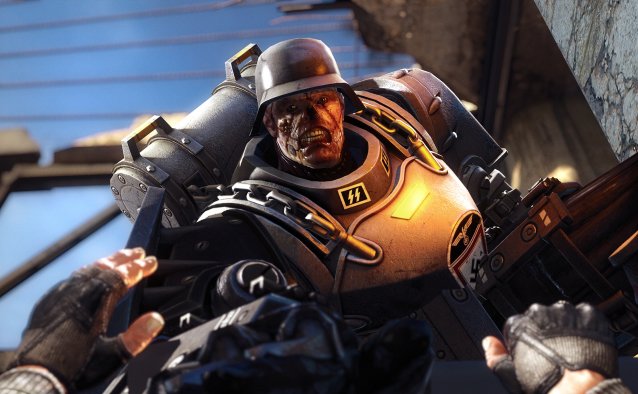 Wolfenstein: The New Order Review
Wolfenstein: The New Order Review